 History
History  History
History  Technology
Technology Top 10 Everyday Tech Buzzwords That Hide a Darker Past
 Humans
Humans 10 Everyday Human Behaviors That Are Actually Survival Instincts
 Animals
Animals 10 Animals That Humiliated and Harmed Historical Leaders
 History
History 10 Most Influential Protests in Modern History
 Creepy
Creepy 10 More Representations of Death from Myth, Legend, and Folktale
 Technology
Technology 10 Scientific Breakthroughs of 2025 That’ll Change Everything
 Our World
Our World 10 Ways Icelandic Culture Makes Other Countries Look Boring
 Misconceptions
Misconceptions 10 Common Misconceptions About the Victorian Era
 Mysteries
Mysteries 10 Strange Unexplained Mysteries of 2025
 History
History 10 Things You Didn’t Know About the American National Anthem
 Technology
Technology Top 10 Everyday Tech Buzzwords That Hide a Darker Past
 Humans
Humans 10 Everyday Human Behaviors That Are Actually Survival Instincts
Who's Behind Listverse?

Jamie Frater
Head Editor
Jamie founded Listverse due to an insatiable desire to share fascinating, obscure, and bizarre facts. He has been a guest speaker on numerous national radio and television stations and is a five time published author.
More About Us Animals
Animals 10 Animals That Humiliated and Harmed Historical Leaders
 History
History 10 Most Influential Protests in Modern History
 Creepy
Creepy 10 More Representations of Death from Myth, Legend, and Folktale
 Technology
Technology 10 Scientific Breakthroughs of 2025 That’ll Change Everything
 Our World
Our World 10 Ways Icelandic Culture Makes Other Countries Look Boring
 Misconceptions
Misconceptions 10 Common Misconceptions About the Victorian Era
 Mysteries
Mysteries 10 Strange Unexplained Mysteries of 2025
10 Foods We Eat That May Lead To Poisoning Or Death
Many consumers take advantage of the foods often found at local grocery stores. We assume that they would never deliberately sell us toxic products. We also believe that commonly encountered ingredients could never be harmful.
The truth is that we eat many mainstream products in our daily lives that could lead to poisoning or even death. Here are 10 of these surprising foods and spices.
10 Cinnamon
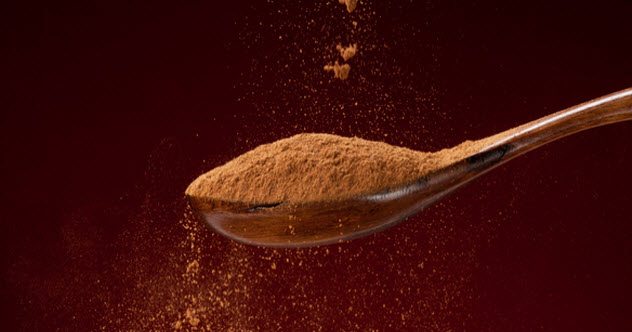
Cinnamon comes in two forms: “regular” and “true.” Ceylon is “true” cinnamon, and cassia is the “regular” alternative sold by most grocers. Ceylon is often pricier, so most people are eating the cassia alternative. While cinnamon does have many benefits, it can also be a contributing factor to certain health issues.
For example, cassia cinnamon contains a compound called coumarin. Small doses are not harmful and may even produce health benefits. But studies on coumarin have shown that substantial intake may lead to an increase in the risk of cancer and other liver issues.[1]
Substantial use over an extended period is the concern of most experts. Due to the elevated risk associated with high consumption, they recommend that cinnamon is best ingested in moderation, especially for those with liver problems.
Anyone with a liver condition should be very wary of cinnamon as it could worsen the situation. For individuals in this category, it may be wise to avoid this spice.
9 Mushrooms
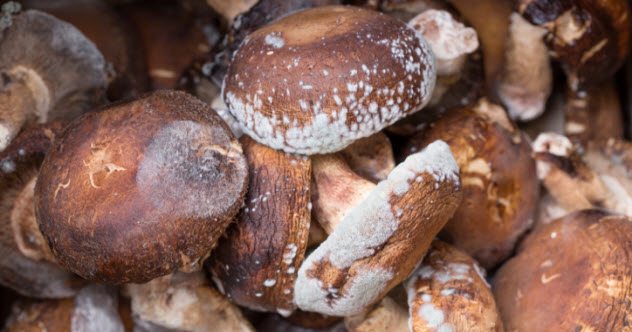
Mushrooms are a delicacy that come in many shapes, forms, and sizes. Ranging from super cheap to ultra expensive, these little fungi are found in a multitude of dishes. Generally speaking, the fresher, the better—because no one wants to eat a slimy and moldy mushroom.
However, every once in a while, these tasty morsels may sit too long with broken plastic wrapping or get canned improperly. The result is no less than slimy mold on the skin and the bacteria botulinum.
Botulinum is found in the intestinal tracts of animals and can be left behind on fresh produce to grow under the perfect conditions. Moldy mushrooms may be an indicator of this deadly bacteria.
Botulinum is a neurotoxin that prevents the nervous system from reacting correctly. Also known as Botox, this toxin is often used in cosmetic procedures. While small doses and injections are not usually toxic, a large intake of improperly stored or canned mushrooms can lead to muscle paralysis and difficulty breathing.[2]
8 Potatoes
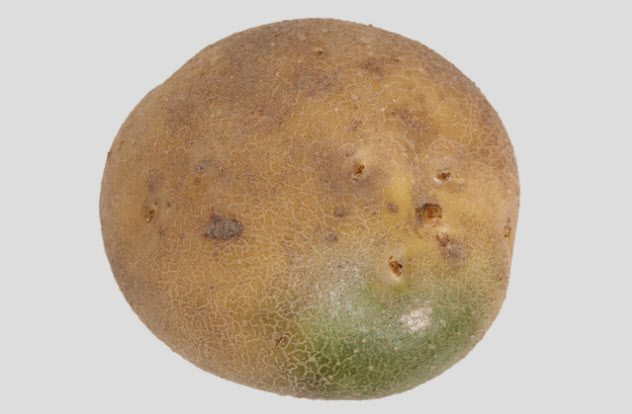
Potatoes and a variety of other vegetables are members of the toxic nightshade family. Despite the deadly connection, these starchy vegetables are usually very safe to eat. Greening potatoes are another story, though.
We usually dismiss a greenish hue on potatoes as chlorophyll due to exposure. However, consumers should be wary. This coloring may also indicate signs of damage that could mean a rise in dangerous levels of a toxic glycoalkaloid called solanine.[3]
In foods like potatoes, solanine content is rarely an issue. But if high levels of this toxin are ingested at once, it can be harmful to the body. For anyone who eats substantial amounts of these tainted buds or has sensitivities to nightshade family members, a reaction can cause everything from headaches to gastrointestinal problems.
As a result, it is wise to avoid green potatoes, especially in large quantities. Anyone thought to have allergies may also want to reconsider before including them in their diet.
To be on the safe side, be choosy when buying potatoes from the store and cut away any green parts. If an area still tastes bitter after peeling, it may be safest not to eat it.
7 Nutmeg

Nutmeg is a universal spice used in everything from sweets to curries. It is also often used in medicine around the world to treat nausea, diarrhea, and other stomach issues. In earlier years, it was even known as an anesthetic in dentistry. For anyone allergic to nutmeg, it is also an unpleasant hallucinogenic.
Nutmeg contains myristicin. Substantial doses and allergies make myristicin deadly when ingested. Overdoses of this toxin can contribute to many unpleasant side effects that are also known as acute nutmeg poisoning. The symptoms may include hallucinations, drowsiness, delirium, and even unconsciousness.[4]
Nutmeg can create a “peyote-like” high, but the aftereffects are said to be very unpleasant. As a result, most people use nutmeg for its tasting qualities instead of as a recreational drug.
Anyone thought to be sensitive to nutmeg should ask about the ingredients in homemade products to ensure that there is no substantial use of the spice. This is especially relevant around the holiday season.
6 Alfalfa Sprouts
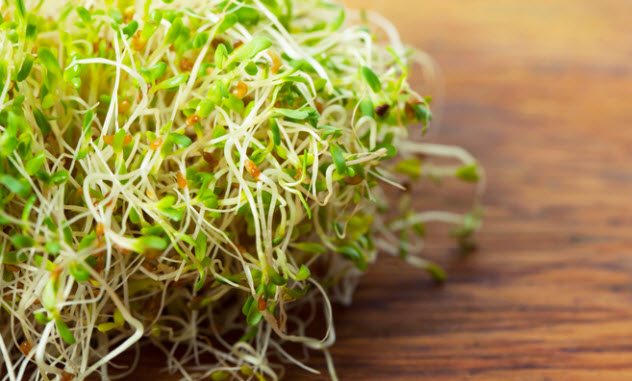
These tasty little greens are often added to salads, soups, and even burgers. For many nutritionists, alfalfa sprouts also make their lists of “superfoods.” However, eating them raw has raised a few health concerns.
For one thing, alfalfa sprouts are likely to become contaminated with E. coli. If the grower and the consumer take proper precautions, though, this shouldn’t be too much of an issue. Many store-bought veggies are just as likely to pose a similar risk. However, the most significant concern with alfalfa sprouts is that they contain a toxin called L-canavanine.
This nonprotein amino acid naturally occurs in many plant species to provide a defense against insects. But it also causes severe responses in autoimmune-compromised persons.[5]
Studies on animals with autoimmune tendencies have shown that consuming vegetables containing L-canavanine caused an increase in conditional flare-ups. Some people have even found it to be a contributing factor to the development of specific diseases like lupus.
Specialists are still conducting studies in humans to nail down the exact connections between raw sprouts and autoimmune problems. For now, though, they recommend that anyone with a compromised immune system steer clear of these little sprouts.
5 Cassava
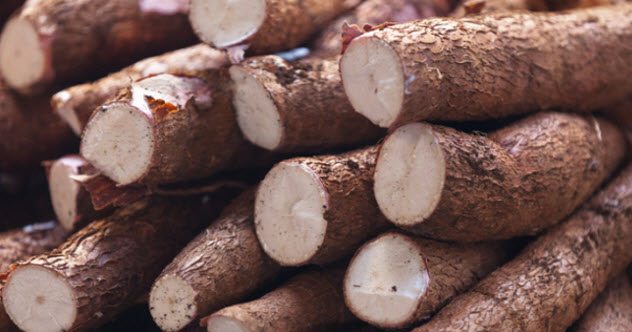
Cassava is another starchy vegetable not commonly seen in American kitchens. However, many people around the world use this strange root in their cooking.
People eat cassava in many different forms. Unfortunately, it contains a deadly toxin known as linamarin. Few individuals realize that cassava is fatal if improperly prepared.
Linamarin is like sugar in its makeup and structure. When cassava is ingested raw, the human body converts the linamarin to the deadly poison cyanide. Chemical companies use cyanide to create fertilizers, pesticides, and fumigants, and it has even been used as a potent chemical weapon.
When prepared correctly, the cyanide is no longer present in the cassava root. If it is not adequately cooked, a meal of cassava can turn into a story with an unfortunate ending.[6]
For those preparing or trying cassava, know that it is a very healthy and filling food that is eaten regularly without issues around the world. Just remember that it can be deadly, too, so you should ensure that it is correctly prepared.
4 Mangoes
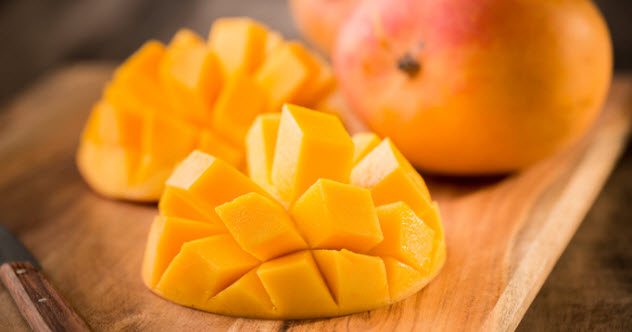
The mango plant is a part of a genus that belongs to the Anacardiaceae family. This family produces fruits called drupes, which are known for their fleshy outsides and stony insides. Blackberries, cashews, and mangoes are all in this category of tasty treats. Unfortunately, sumac and poison ivy are also members.
A few plants in the Anacardiaceae family produce a substance known as urushiol—the white, sticky substance that oozes from the mango rind. Allergies to urushiol are not an issue for the majority of the population, but anyone with a sensitivity to it will break out in a blister-like rash.
Many individuals only experience these problems, known as mango itch, when dealing with the skin of the fruit. By wearing gloves when peeling, these effects are easily avoidable. For those with a hypersensitivity, contact with the rind, leaves, and flesh can lead to rashes and even anaphylactic shock. If you experience symptoms of mango itch, avoid dealing with the skin and overeating this raw, tasty treat in the future.[7]
3 Sweet Potatoes
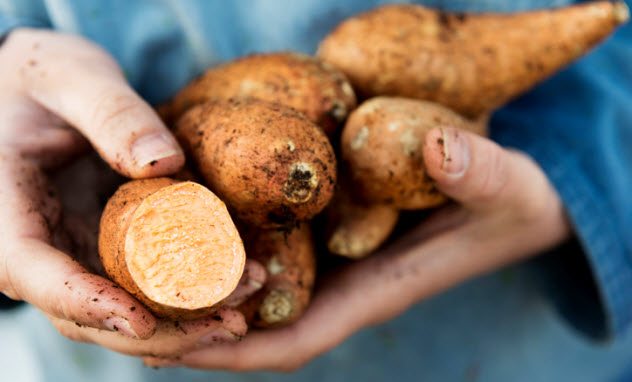
This potato alternative isn’t actually a potato at all but a member of the bindweed or morning glory family. Many people enjoy this food as a traditional holiday favorite, and some prefer to eat it for its health benefits. Although sweet potatoes contain many vitamins and nutrients, consumers need to be wary of the potential health hazards from mold growth.
Due to many different storage and age factors, mold can grow on the skin of sweet potatoes. This specific mold can cause hepatotoxicity when ingested. The deadliness of sweet potato mold was mainly discovered due to cattle herds. In more than one reported case, details came in that the bovines were experiencing unknown respiratory issues. These issues were eventually traced back to moldy sweet potatoes.[8]
This toxic fungal growth is also unsafe for human consumption. Although most people recognize moldy food and tend to throw it away, a piece or two may sometimes slip through the cracks. As this mold may cause hepatotoxicity, it is wise to check the skin of sweet potatoes thoroughly. Discard the tuber if there are any doubts about the state of the peel.
2 Red Kidney Beans
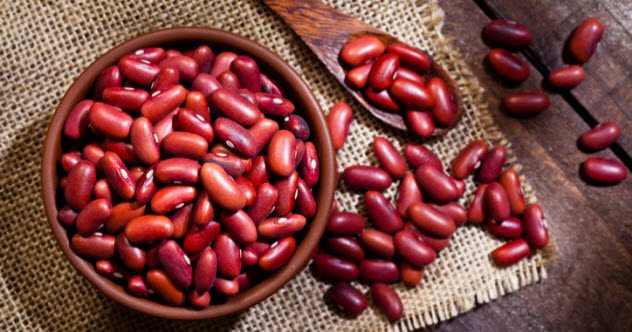
Many favor red kidney beans for their use in tacos, chili, soups, and more. With these beans found in most stores and rarely seen as harmful, few people realize that proper bean preparation is essential. Consuming raw kidney beans can be fatal.
Beans contain phytohaemagglutinin, a natural toxin found in many legumes. The amount of lectin found in these foods is not very toxic, but it is highest in raw red kidney beans. The USDA refers to this compound as kidney bean lectin.
Cooking and soaking breaks down this lectin, but it is still present if the legumes are undercooked. As little as a handful of undercooked beans can induce a reaction and cause food poisoning to occur.[9]
To prevent issues, follow the cooking directions on the packaging. Soak beans overnight, and always cook for the recommended amount of time at the proper temperature.
1 Quail

Although quail isn’t commonly found on everyone’s dinner plate, many people still enjoy hunting for and eating this delicacy. Quail themselves do not present any potentially harmful issues. However, what may cause problems is precisely what these birds are eating.
Quail are small scavenging fowl that consume seeds, various grains, and random insects. During migration, they move across the country and add other varieties of foods to their diet—including hemlock.
Hemlock is a plant with a high toxicity level for most animals. Quail actually show resistance to the plant and appear to eat it without adverse effects. Unfortunately, humans do not share this trait. As a result, quail poisoning (aka coturnism) occurs when a person eats one or more of these tainted fowl.[10]
Reports of coturnism have appeared throughout history but with very few linking attributions. Unfortunately, many quail connoisseurs don’t realize that they could be eating tainted meat. Suspected cases often report dinner guests as suffering from vomiting, muscle soreness, and pain. These symptoms associated with toxic quail are hard to pinpoint, but many experts have linked them to eating tainted birds.
Coturnism is a rarely seen phenomenon. It is familiar enough, though, that it should be recognized in the culinary community. If the tainted quail is eaten in small amounts, a person may experience nothing more than indigestion.
However, the unlucky few who consume too much of the fouled fowl can experience permanent damage to the nervous system and other parts of the body. In the worst-case scenario, coturnism can lead to coma and even death. As a result, experts warn us to be wary of quail in migration mode.
Sharon Seals has previously worked as a linguist, teacher, roofer, waiter, and tattoo artist. She now lives in the mountains and happily works as a freelance writer. She lives with her boyfriend and Schnoodle and specializes in travel, content, copywriting, and anything art related. Contact her on LinkedIn.
Read about other deadly foods on Top 10 Poisonous Foods We Love To Eat and 10 Horrifyingly Deadly Sweets And Treats.
![Top 10 Disgusting Foods The Chinese Eat [DISTURBING] Top 10 Disgusting Foods The Chinese Eat [DISTURBING]](https://listverse.com/wp-content/uploads/2020/03/23773182-0-image-a-46_1580303417295-150x150.jpg)







